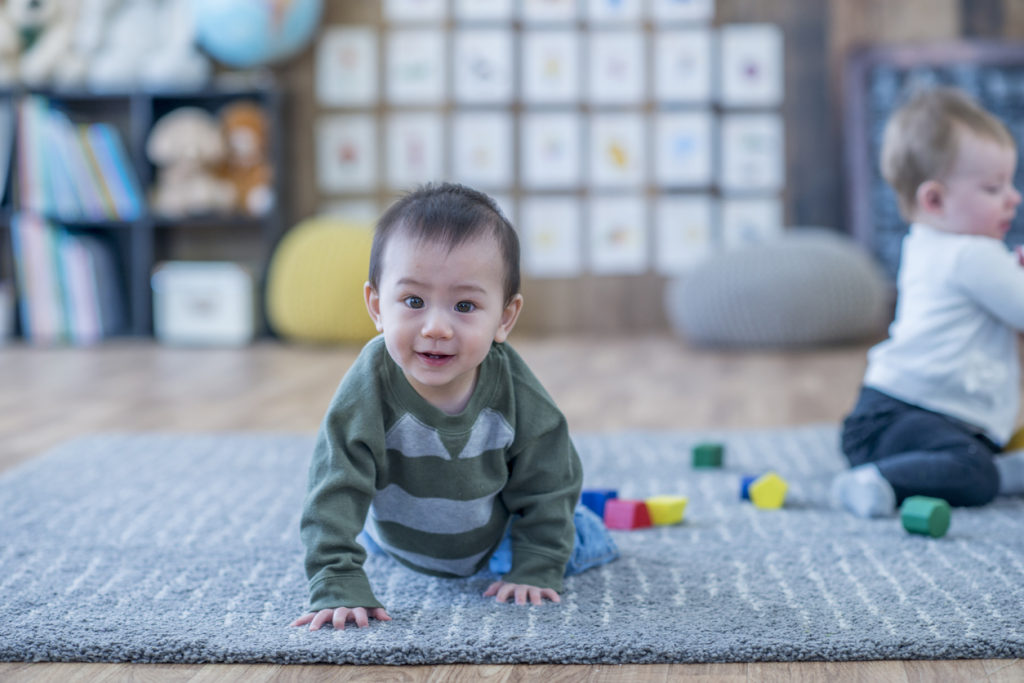Promote the physical development of infants in your care with activities that encourage growth
Although they don’t seem to be doing much at first glance, babies are growing, learning, and changing from day one, and master a remarkable number of skills within their first year of life. One such accomplishment involves learning to use their body in an intentional and coordinated way to overcome physical obstacles to reach, move, and play. As a caregiver, you can encourage this growth by providing activities that help with physical development in babies.
Infant-friendly exercises
Babies all develop at different stages, but generally within the same time frame. Incorporate the following activity suggestions by age range into your daily caregiving routine to provide stimulating opportunities that promote physical growth.
Zero to three months
- Make tummy time a daily activity to strengthen neck, arm, and back muscles
- Hold baby’s hands or feet and clap them together as you sing
- Change the positioning of the baby each time you put them down to sleep to encourage head-turning
- Hold baby to your chest so that you’re face-to-face and they use their upper body muscles to look up at you
- Hang a shiny or colorful mobile above the baby’s crib to encourage visual tracking and focus
Four to six months
- Increase the length of time baby spends on their tummy each day
- Offer toys just out of reach to encourage stretching and moving
- Place age-appropriate toys in their hands to practice grasping and transferring
- Teach baby how to roll, drop, or bounce balls
- Play peek-a-boo or pat-a-cake using baby’s hands
Seven to nine months
- Gently roll a ball to the baby while in a sitting position
- Push the baby in a swing once he can sit and hold his head steady
- Encourage baby to put toys into, and take them out of a box, bin, or bucket
- Offer baby a third toy as he holds one in each hand
- Allow baby to bang on buckets or kitchen items like drums
Ten to twelve months
- Introduce stacking toys such as rings or blocks
- Practice blowing kisses, giving high fives or clapping hands
- Help baby stand or provide push toys that allow supported walking
- Put music on and encourage baby to bounce or dance
- Roll a ball across the floor and urge the baby to crawl after it
While it’s important to remember the wide range of ability and growth rates, it’s also essential to pay close attention and identify children who may need early intervention. If you have concerns about the physical progress about a baby in your care, approach their parents about it gently to bring it to their attention. Offer suggestions about activities they can work on at home and urge them to discuss the situation with their pediatrician.
Babies pick up new skills at a rapid pace, and it is fun for both baby and caregiver alike to recognize and celebrate these milestones and achievements. Fill your days with activities that challenge the infants in your care to explore the abilities of their body and promote healthy physical development.
The Virginia Infant & Toddler Specialist Network helps improve the quality of care for infants and toddlers through extensive resources, services, and education for caregivers. Learn more about how we can help you improve the standard of care.




